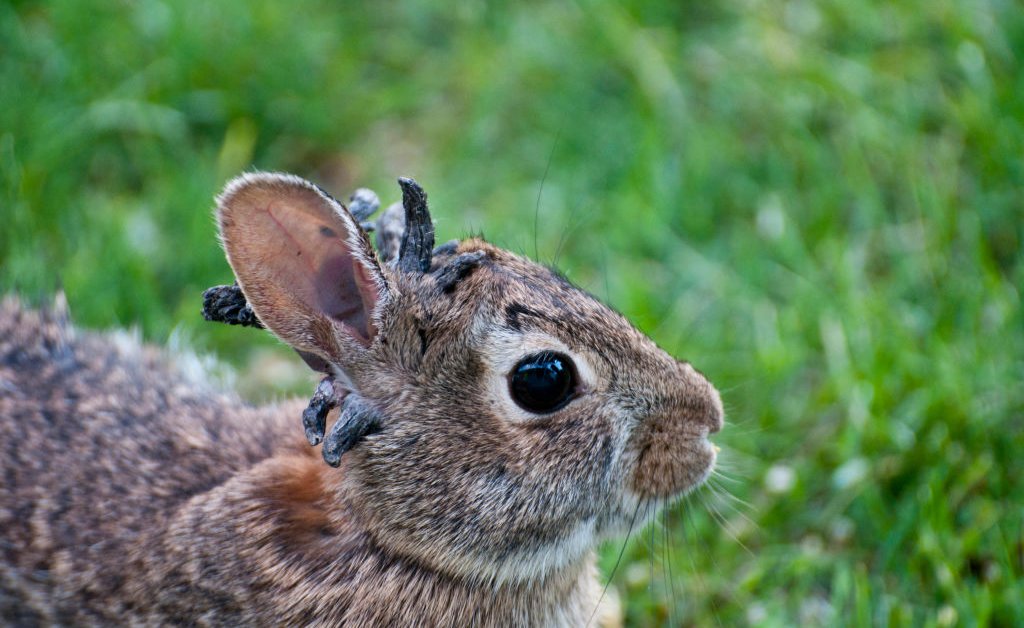Rabbit Hemorrhagic Disease Virus (RHDV-2) In Colorado: Facts And Concerns

Welcome to your ultimate source for breaking news, trending updates, and in-depth stories from around the world. Whether it's politics, technology, entertainment, sports, or lifestyle, we bring you real-time updates that keep you informed and ahead of the curve.
Our team works tirelessly to ensure you never miss a moment. From the latest developments in global events to the most talked-about topics on social media, our news platform is designed to deliver accurate and timely information, all in one place.
Stay in the know and join thousands of readers who trust us for reliable, up-to-date content. Explore our expertly curated articles and dive deeper into the stories that matter to you. Visit Best Website now and be part of the conversation. Don't miss out on the headlines that shape our world!
Table of Contents
Rabbit Hemorrhagic Disease Virus (RHDV-2) in Colorado: Facts and Concerns
Colorado's rabbit population faces a significant threat from the highly contagious Rabbit Hemorrhagic Disease Virus (RHDV-2). This devastating viral disease is causing widespread concern among wildlife officials, pet rabbit owners, and anyone who appreciates the ecological role of rabbits in Colorado's diverse ecosystem. Understanding RHDV-2, its impact, and the preventative measures being taken is crucial.
What is RHDV-2?
RHDV-2 is a highly lethal virus that affects rabbits and hares. It's a calicivirus, meaning it's related to other viruses that cause illnesses in various animals. Unlike some diseases, RHDV-2 doesn't typically affect other species, including humans, dogs, and cats. However, direct contact with infected rabbits or their bodily fluids should be avoided.
Symptoms and Transmission:
The virus is incredibly contagious and spreads rapidly through direct contact with infected rabbits, their bodily fluids (including saliva, feces, and urine), contaminated food and water sources, and even indirectly through vectors like insects. Symptoms can appear suddenly and include:
- Lethargy and weakness: The rabbit may seem unusually tired or sluggish.
- Loss of appetite: A significant decrease in food intake is a key indicator.
- Fever: Although difficult to detect in rabbits, fever is often present.
- Bloody nasal discharge: This is a particularly alarming symptom.
- Sudden death: RHDV-2 often leads to rapid death with minimal warning signs.
Impact on Colorado's Wildlife:
The impact of RHDV-2 on Colorado's wild rabbit populations is a major concern. Rabbits play a crucial role in the state's delicate ecosystem, serving as a vital food source for predators like coyotes and hawks. A significant decline in rabbit populations could have cascading effects throughout the food chain. Furthermore, certain rabbit species are more vulnerable than others, potentially leading to imbalances within the ecosystem. [Link to Colorado Parks and Wildlife website regarding wildlife impacts].
Protecting Your Pet Rabbits:
Pet rabbit owners need to be vigilant. The best defense is prevention. Here's what you can do:
- Vaccination: Vaccines are available for RHDV-2 and are highly effective. Consult your veterinarian immediately about vaccination for your pet rabbits.
- Biosecurity: Strict biosecurity measures are crucial. This includes avoiding contact with wild rabbits, properly cleaning and disinfecting cages and equipment, and carefully managing the introduction of new animals into your home.
- Quarantine: Quarantine any new rabbits for at least 30 days before introducing them to your existing pets.
- Hygiene: Practice excellent hygiene when handling your rabbits and their environment.
What is being done?
Colorado Parks and Wildlife (CPW) is actively monitoring the spread of RHDV-2 and working to mitigate its impact. This includes research, public awareness campaigns, and collaboration with other agencies and researchers. [Link to CPW's RHDV-2 information page].
Conclusion:
RHDV-2 poses a serious threat to Colorado's rabbit population. While there is no immediate cure, preventative measures such as vaccination and strict biosecurity are essential to protect both wild and domestic rabbits. Staying informed and taking proactive steps is crucial in minimizing the devastating effects of this virus. Remember to contact your veterinarian or Colorado Parks and Wildlife with any concerns. Learn more and stay updated on the latest developments by visiting the CPW website and following their social media channels.
Keywords: Rabbit Hemorrhagic Disease Virus, RHDV-2, Colorado, rabbits, hares, wildlife, pet rabbits, vaccination, biosecurity, CPW, Colorado Parks and Wildlife, disease, virus, contagious, symptoms, prevention.

Thank you for visiting our website, your trusted source for the latest updates and in-depth coverage on Rabbit Hemorrhagic Disease Virus (RHDV-2) In Colorado: Facts And Concerns. We're committed to keeping you informed with timely and accurate information to meet your curiosity and needs.
If you have any questions, suggestions, or feedback, we'd love to hear from you. Your insights are valuable to us and help us improve to serve you better. Feel free to reach out through our contact page.
Don't forget to bookmark our website and check back regularly for the latest headlines and trending topics. See you next time, and thank you for being part of our growing community!
Featured Posts
-
 Dovals Rough Start A Look At The Yankees New Pitchers Adjustment Period
Aug 25, 2025
Dovals Rough Start A Look At The Yankees New Pitchers Adjustment Period
Aug 25, 2025 -
 Serena Williams And Carlos Alcaraz Headline Us Open Mboko A Contender To Watch
Aug 25, 2025
Serena Williams And Carlos Alcaraz Headline Us Open Mboko A Contender To Watch
Aug 25, 2025 -
 Vince Mc Mahon Meets Wwe Executive What Does It Mean For The Future
Aug 25, 2025
Vince Mc Mahon Meets Wwe Executive What Does It Mean For The Future
Aug 25, 2025 -
 Chanda Rubin Alcaraz Must Focus On Opelka In Us Open First Round
Aug 25, 2025
Chanda Rubin Alcaraz Must Focus On Opelka In Us Open First Round
Aug 25, 2025 -
 Same Rules For All Fans Paul Backs Pegulas Proposal For Improved Tennis Etiquette
Aug 25, 2025
Same Rules For All Fans Paul Backs Pegulas Proposal For Improved Tennis Etiquette
Aug 25, 2025
Latest Posts
-
 Data On Transgender Teens In The Us A Potential Loss And What It Means
Aug 25, 2025
Data On Transgender Teens In The Us A Potential Loss And What It Means
Aug 25, 2025 -
 First Day Jitters And Federal Control The Reality Of D C Schools
Aug 25, 2025
First Day Jitters And Federal Control The Reality Of D C Schools
Aug 25, 2025 -
 Federal Intervention In D C Schools A Parents Perspective
Aug 25, 2025
Federal Intervention In D C Schools A Parents Perspective
Aug 25, 2025 -
 Tennis Star Alcaraz Confident Ahead Of Us Open Serena Williams Returns
Aug 25, 2025
Tennis Star Alcaraz Confident Ahead Of Us Open Serena Williams Returns
Aug 25, 2025 -
 Snoop Doggs Controversial Comments On Lgbtq Inclusion In Cinema
Aug 25, 2025
Snoop Doggs Controversial Comments On Lgbtq Inclusion In Cinema
Aug 25, 2025
